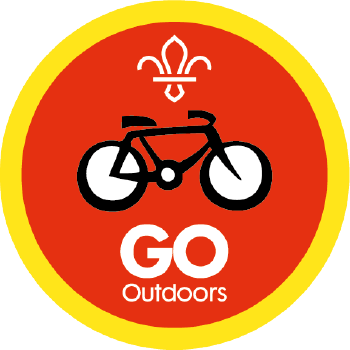
Cycling through the seasons
You’ll need
- Scrap paper
- Pens or pencils
Prepare the game
- Use scrap paper to make some signs that read ‘cold’, ‘hot’ and ‘wet’ and place them on the floor, or on walls in different parts of the room.
- Players will be running between these points, so make sure the area is safe and that there’s enough space between the signs to make the game active.
The game
- Using the information below, call out the advice for different types of weather.
- Players should then run to the side of the room they think matches that safety tip. For example, if the advice comes from the ‘wet’ section, they need to run to the ‘wet’ sign.
- Each time, be sure to ask the players to explain why they ran to that sign, and correct them if their answer was incorrect. If the group didn’t get one right, repeat the tips, to see if they’ve remembered the correct answer.
- Once all the tips have been discussed, congratulate the group for exploring how to cycle safely in different weather conditions.
- Wash off any salt after you ride. (This prevents your bike frame from rusting.)
- Use winter lubricant on your bike.
- Reduce tyre pressure. (This will give you better grip on the road.)
- Wear cycling gloves to protect your hands. (As your hands may become very cold and numb.)
- Take water with you to keep hydrated.
- Rest to avoid overheating.
- Use summer lubricant on your bike.
- Have higher pressure in your tyres. This will help you ride with less effort and should be safe as the roads should not be wet.
- Use waterproof grease on your chain. This stops water from getting into parts of your bike.
- Clean wet mud off your bike after a ride to stop your bike from rusting.
- Use mudguards to stop mud from splashing on to you and your bike.
- Brake sooner as roads will be slippery.
Reflection
Preparing to ride in different seasons is a practical skill that can make the difference between a good or a bad day out. What is the best weather to ride in? Why can preparation for bad weather save you time?
Safety
All activities must be safely managed. You must complete a thorough risk assessment and take appropriate steps to reduce risk. Use the safety checklist to help you plan and risk assess your activity. Always get approval for the activity, and have suitable supervision and an InTouch process.
This activity can be made harder by asking a player from each group to explain their choices.
Those with mobility issues could be given an extra set of sheets that say ‘cold’, ‘hot’ and ‘wet’, to hold up.
All Scout activities should be inclusive and accessible.
Leaders should encourage young people with cycling experience to share their tips on how to make cycling in bad weather safer and more comfortable.
